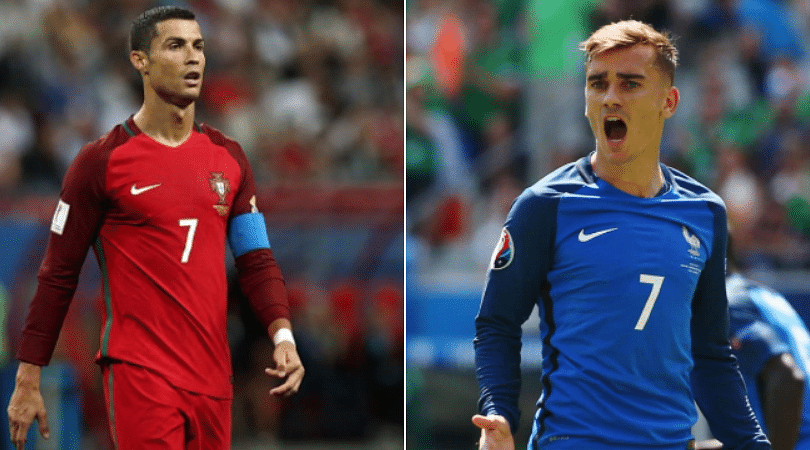TheSportsRush brings the guide to UEFA Nations League, a new format introduced by the European football governing body.
The inaugural edition of the UEFA Nations League will kick-start from Thursday, with 55 nations from across the globe competing in four separate leagues. The tournament will kick-off with a big clash between World Cup 2018 winners, France and their predecessors, Germany on Thursday.
The 55 nations will be divided into four separate leagues, with League A containing the top 12 teams. The League B features the next 12, following by 15 teams in League 3 and 16 teams in the bottom League D.
Each league will feature four more groups, consisting of three or four teams contesting each other home and away in September and November.
Following this whole procedure, the four group winners from League A will qualify for the UEFA Nations League final to be played from 5-9 June 2019. The semi-finals, third-place play-off and final will all be played, with the hosts being decided from the four finalists in December.
Along with the title and trophy up for grabs, there will be an incentive of promotion and relegation, with the bottom ranked teams of League A, B, C to be relegated and replaced by the toppers of League B, C, D.
The 24 teams Euro 2020 tournament’s qualification will commence from March to November next year, with the draw to be held in December this year. However, the qualifications will not be the only route to qualify for the 2020 event that will be played across 12 host countries.
Twenty teams will qualify based on the top two teams of all the 10 groups. Apart from that, the remaining four teams will be decided from the Nations League playoff to be held in March 2020.
Each of the four leagues will hold play-offs in March amongst themselves with a semi-final and a final being played. The winner of the play-offs will advance to the Euro 2020 tournament. On the other hand, if a team has already qualified through the original route, then the next-best placed team will replace them. Moreover, if a group does not have four teams to contest, the slots will be allotted to teams from another league.
The UEFA Nations League comes at a time where international football is losing importance. The start of the league will reduce the number of meaningless friendlies, and will surely fill up the stadiums to an extent.
Also read: Barcelona to play first ever La Liga match in the US against Girona
Moreover, smaller nations always find it tougher to arrange friendlies with other big teams. With the introduction of the league with home and away legs, it will benefit smaller countries financially as well.
However, on the other hand, teams are also free to arrange friendly amongst themselves out of the tournament schedule.
UEFA NATIONS LEAGUE DRAW
League A
Group 1: Germany, France, Netherlands
Group 2: Belgium, Iceland, Switzerland
Group 3: Italy, Poland, Portugal
Group 4: Croatia, England, Spain
League B
Group 1: Czech Republic, Slovakia, Ukraine
Group 2: Russia, Sweden, Turkey
Group 3: Austria, Bosnia and Herzegovina, Northern Ireland
Group 4: Denmark, Republic of Ireland, Wales
League C
Group 1: Albania, Israel, Scotland
Group 2: Estonia, Finland, Greece, Hungary
Group 3: Bulgaria, Cyprus, Norway, Slovenia
Group 4: Lithuania, Montenegro, Romania, Serbia
League D
Group 1: Andorra, Georgia, Kazakhstan, Latvia
Group 2: Belarus, Luxembourg, Moldova, San Marino
Group 3: Azerbaijan, Faroe Islands, Kosovo, Malta
Group 4: Armenia, Macedonia, Gibraltar, Liechtenstein



